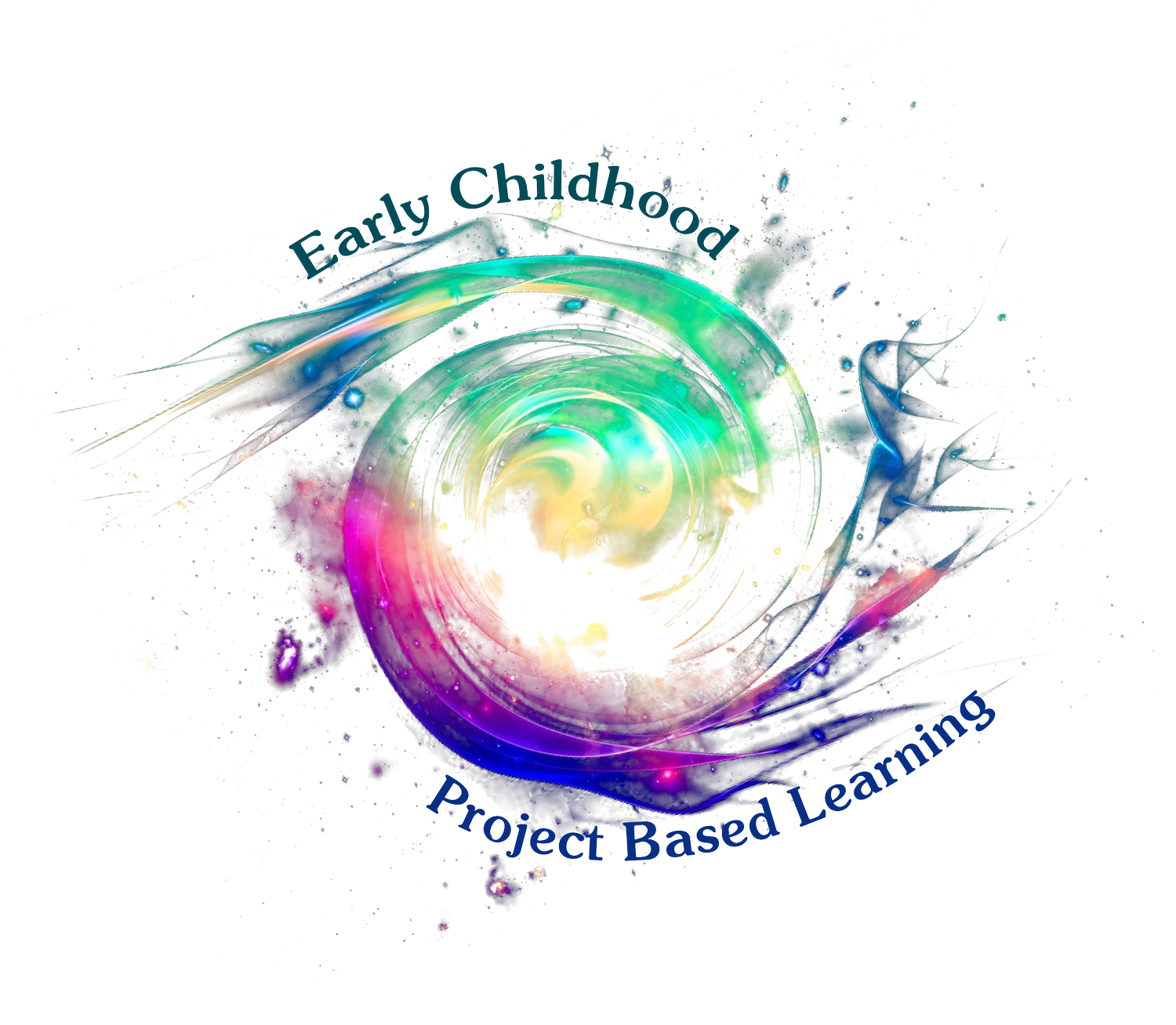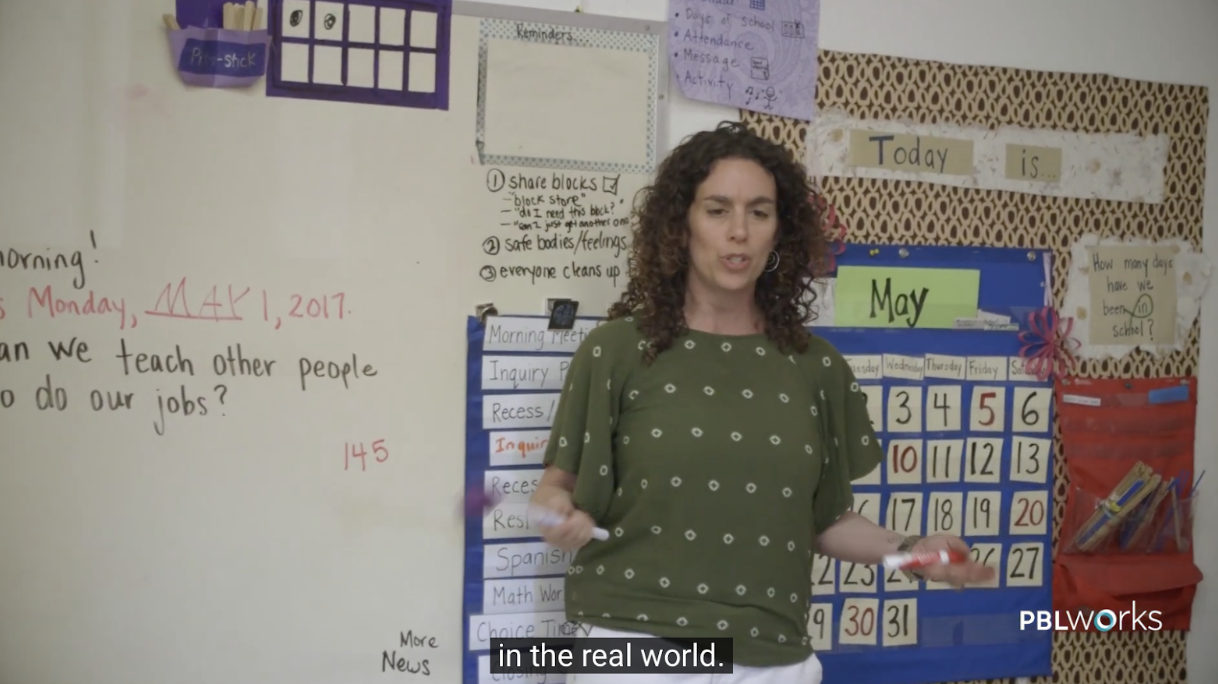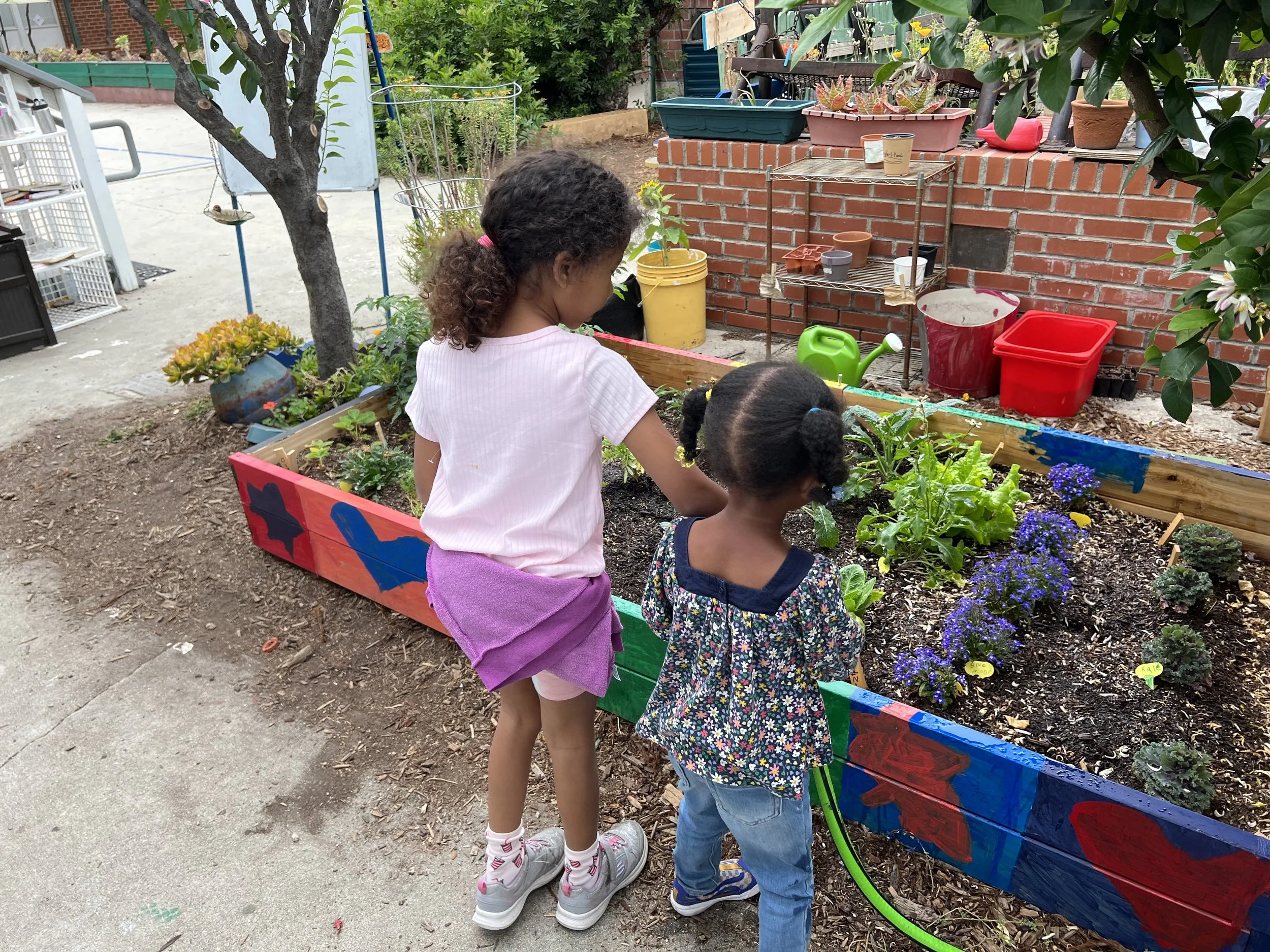Our Classrooms ARE the Real World
In a video of a project I facilitated with my Transitional Kindergarten students (ages four and five) in the spring of 2017, I introduced a guest speaker - a parent I had invited to be our “expert visitor” – by first reading our morning message: “How can we teach other people how to do our jobs?” In the video, I continue by explaining my question to the children: “And I was thinking about - what do people do in the real world? What do grown-ups do when they start a job, and they have to do a job? So I was doing some thinking about that, and I asked some parents if they wanted to share.”
I have watched this video upward of 100 times over the years - it is a part of a PBL 101 Workshop I facilitate as a member of the National Faculty of PBLWorks. But I admit I cringe every time I get to this part of the video and I hear myself say one, small phrase - one we hear all the time in Project Based Learning (PBL), but one I’ve come to realize carries a big problem – “the real world.”
Now let me say off the bat that I know why PBL is so heavily associated with the “real world.” PBL as a pedagogical approach invites children to collaborate to solve a problem or answer a question that allows them to learn knowledge, skills and dispositions in an authentic context. They are learning to do something; to make an impact in a real way, and this is truly unique. I have been a PBL teacher for two decades, and I believe PBL is simply the most effective approach to instruction on so many levels. But I think there is a fundamental flaw in the use of this phrase “real world” when it comes to the learning that children do, particularly young children, in PBL. No one intends for this phrase to be a problem, yet it is.
The problem is this: I believe that – for children – what happens in a school is the real world.
A Few Definitions
I understand that typically, these two words are separated by a hyphen, as in, “real-world problems,” and that hyphenated phrase is an adjective that describes the type of problems or learning happening in PBL. While unintentional, our use of “real-world” to describe the type of problems being solved or questions being answered in PBL unintentionally diminishes the really-real experiences of the children doing the learning. In either case, hyphen, or no hyphen, the term “real world” is misleading. I first decided to confront this issue head on by looking up the definition of “real-world” in the dictionary.
Webster defines “real-world” as the following:
existing or occurring in reality : drawn from or drawing on actual events or situations : REAL-LIFE
I think we can all agree that the “actual events or situations” that occur, where children exist – the seven hours a day, five days a week, roughly 40 weeks a year - is definitely their “real life” or in other words - their “real world.”
But in my example, I had asked children more about the noun, not the adjective. I said “What do people do in the real world?” So I also decided to look up each word (real and world) individually.
“World” had several applicable definitions and examples, but the most relevant to this discussion was:
“the sphere or scene of one's life and action”
living in your own little world.
For “real” the definition was:
of or relating to practical or everyday concerns or activities
And, remarkably, the example for that definition was:
“left school to live in the real world.”
“Left school to live in the real world!” Look at that. Miriam Webster actually proved my point in stating that we adults think that the “real world” is definitely NOT school. This is a big mistake, and it’s one that even experienced PBL practitioners make.
The phrase “real world” implies that school (which is absolutely the “sphere or scene” of children’s life and action) is not real life. But children most definitely live real lives in school. Their feelings, their relationships, their experiences are all real.
When I told kids that I was thinking about what people do in the “real world,” I devalued the actual real world that they are existing in, right now; the one where young children (really all children) spend so much time; where they build essential relationships with adults and peers. Where they experience joy and struggle and growth.
When we use the phrase “real world,” we send a message to children, care-givers and even other teachers - that this “school world” - i.e. the world of a child - isn’t really important. The hours between 8:00 am and 3:00 pm are just preparation for what’s to come; that the friendships, the learning, the celebrations aren’t really real. We are essentially saying to children: the real world is the one you are preparing for, not the one you are in now, in this present moment. And our PBL unit (the one we work on a few hours a day at most) is your chance to really learn about that world and make a difference in it.
Finding Alternatives
We need to find some alternative ways to describe the deep, relevant and authentic learning that children engage in when they do PBL, so as not to minimize the experience and agency of children.
When I facilitate PBL workshops or coach early childhood educators, a question that regularly arises is something to the effect of “Do we have to do a project that is outside the classroom?” Early childhood teachers seem to have a hunch that this isn’t always necessary, nor potentially always developmentally appropriate. Do children have to be “engineers” or “travel agents” or “marine biologists” to learn all the knowledge, skills and dispositions? Or can they just be children who can do the work that adults do? I tell people that YES, there are plenty of Driving Questions (I call them“Big Questions” with my students) to answer and problems to solve right here in our classrooms that we can work to answer. Children can be authors, gardeners or designers, right now. They don’t have to act “as” anyone. They can just be themselves and still make a difference in their (real) world. And this doesn’t mean that their products have to stay in the classroom. It just means that the work they do is as children.
TK students taking care of the garden they planted as a part of a PBL unit.
When we use the phrase 'real-world,' we diminish school as a place where children form deep connections, navigate challenges, and experience meaningful learning. And I definitely want children to know that I value this world – this sphere and scene of their life and action – as it is right now, not just the one they will grow into. I want my students to know that they have the power to impact this world they are currently living in, not the “real one” that is outside and beyond their own.
In my workshops and coaching sessions, I now offer the following alternatives: I might talk about designing projects that reflect “the world outside of the classroom” or “the adult world”. This describes what is true; young children can definitely engage in learning that impacts the world outside of their classrooms, and that’s the real point of PBL. That learning has purpose, fosters agency, and creates meaningful impact. But I want them to know that they can do that as children, in their current reality.
Now, after I show that video, I share that I wish I could go back and change my wording, and I explain why. As educators, we can always rethink things. Let’s be intentional with our language. Let’s remind children—and ourselves—that school isn’t separate from the real world. School is the real world where children are already building relationships, solving problems, and making an impact – right now.
Sara Lev is the co-founder of Early Childhood PBL, LLC. She lives in Los Angeles with her husband and two sons. She is the co-author of Implementing Project Based Learning in Early Childhood: Overcoming Misconceptions and Reaching Success (Routledge, 2020). You can learn more about her here.


